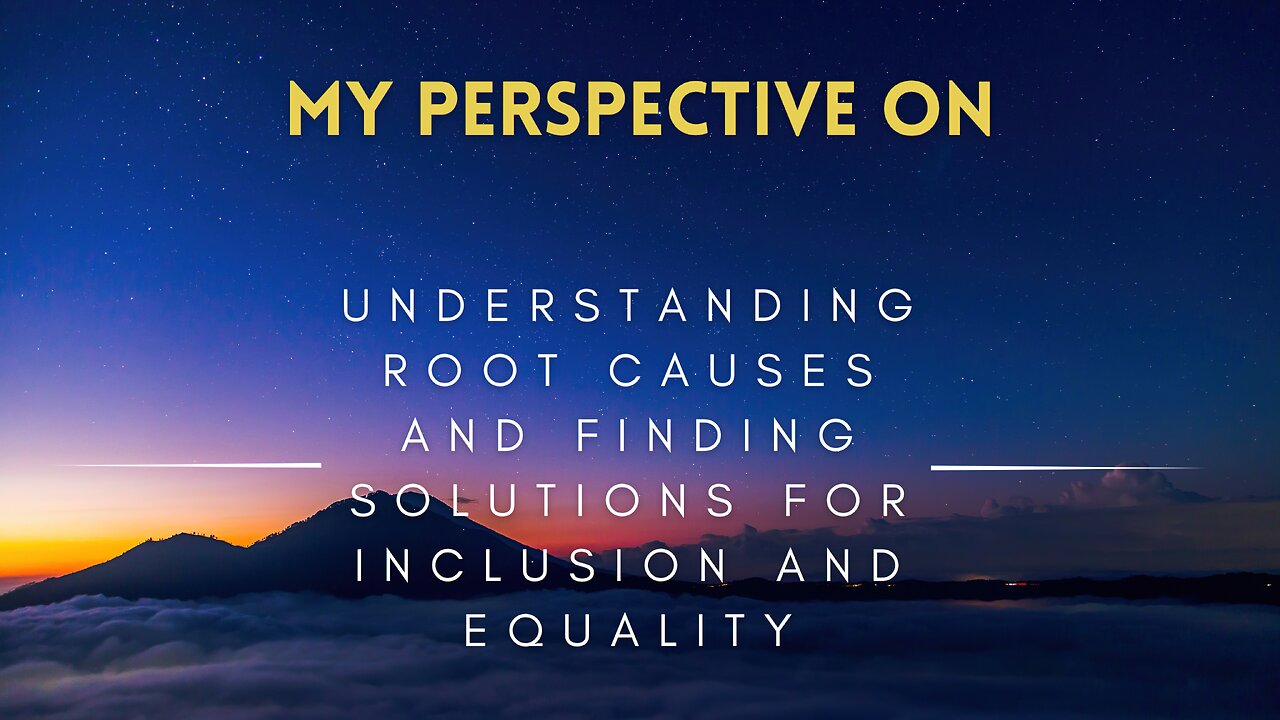Premium Only Content

15 - Understanding Root Causes and Finding Solutions for Inclusion and Equality
In this episode titled "Understanding Root Causes and Finding Solutions for Inclusion and Equality", we delve deep into addressing misconceptions and understanding the root causes of issues surrounding gender dynamics. We take a hard look at societal and cultural patterns, discussing behaviors that are detrimental to individuals, regardless of gender. Harnessing the power of data, empathy, and solution-focused thinking, we explore ways to foster diversity, equality, and inclusion. Join us as we strive for a society that affords equal opportunities for all to succeed and thrive.
#inclusion #equality #genderdynamics #empathyquotientscale #diversity #constructivefeedback #problemsolving #harmfulstereotypes #equalopportunity #automation #futureofwork #socialroletheory
References for Further Reading:
Baron-Cohen, S., & Wheelwright, S. (2004). The Empathy Quotient: An Investigation of Adults with Asperger Syndrome or High Functioning Autism, and Normal Sex Differences. Journal of Autism and Developmental Disorders, 34(2), 163–175. https://doi.org/10.1023/B:JADD.0000022607.19833.00
Eagly, A. H., Wood, W., & Diekman, A. B. (2000). Social role theory of sex differences and similarities: A current appraisal. In The developmental social psychology of gender. (pp. 123–174). Lawrence Erlbaum Associates Publishers.
Frey, C. B., & Osborne, M. A. (2017). The future of employment: How susceptible are jobs to computerisation? Technological Forecasting and Social Change, 114, 254–280. https://doi.org/10.1016/j.techfore.2016.08.019
Jost, J. T., & Kay, A. C. (2005). Exposure to Benevolent Sexism and Complementary Gender Stereotypes: Consequences for Specific and Diffuse Forms of System Justification. Journal of Personality and Social Psychology, 88(3), 498–509. https://doi.org/10.1037/0022-3514.88.3.498
Rawls, J. (1999). A Theory of Justice (2nd edition). Belknap Press: An Imprint of Harvard University Press.
-
 LIVE
LIVE
tacetmort3m
1 day ago🔴 LIVE - SOLO RANK GRINDING CONTINUES - MARVEL RIVALS
3,412 watching -
![Shadows Of Chroma Tower, Alpha Playtest [Part 1]](https://1a-1791.com/video/fwe2/1d/s8/1/5/Q/U/n/5QUnx.0kob-small-Shadows-Of-Chroma-Tower-Alp.jpg) 13:29:21
13:29:21
iViperKing
15 hours agoShadows Of Chroma Tower, Alpha Playtest [Part 1]
94.5K3 -
 54:05
54:05
TheGetCanceledPodcast
13 hours ago $12.01 earnedThe GCP Ep.11 | Smack White Talks Smack DVD Vs WorldStar, Battle Rap, Universal Hood Pass & More...
104K18 -
 13:37
13:37
Exploring With Nug
17 hours ago $6.92 earnedSUV Found Underwater Searching For Missing Man Jerry Wilkins!
69.2K4 -
 2:58:21
2:58:21
xBuRnTx
12 hours ago1st Warzone Stream Online
51.2K2 -
 6:10:21
6:10:21
JdaDelete
1 day ago $13.94 earnedDino Crisis - Sega Saturday
113K4 -
 23:22
23:22
MYLUNCHBREAK CHANNEL PAGE
1 day agoUnder The Necropolis - Pt 5
95.8K52 -
 2:26:11
2:26:11
Jewels Jones Live ®
2 days agoWINNING BIGLY | A Political Rendezvous - Ep. 108
153K46 -
 2:04:49
2:04:49
Bare Knuckle Fighting Championship
4 days agoBKFC FIGHT NIGHT MOHEGAN SUN FREE FIGHTS
79.5K7 -
 25:09
25:09
BlackDiamondGunsandGear
15 hours agoYou NEED to be Training For Whats to Come
54.7K11